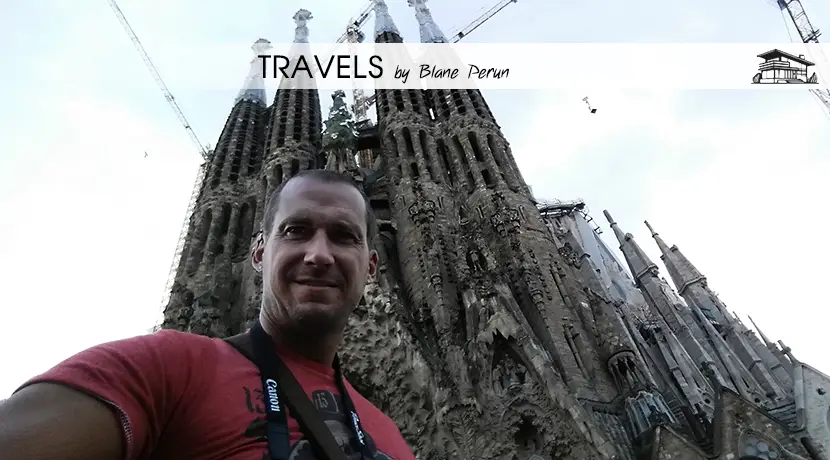Barcelona Architecture & Interior Design
Embracing the Marvels: Barcelona Architecture & Design
When we talk about Barcelona Architecture & Design, it’s like opening a treasure chest of visual wonders and innovative concepts. This vibrant city, nestled along the Mediterranean coast, is not just a hub of cultural diversity but also a playground for architectural enthusiasts and design aficionados. From the whimsical creations of Antoni Gaudí to the sleek, contemporary structures that dot the skyline, Barcelona serves as a living museum that showcases an eclectic mix of traditional and avant-garde designs. Let’s delve into the heart of this architectural paradise and uncover what makes it a mecca for design lovers worldwide.

The Legacy of Modernisme
Gaudí’s Masterpieces
Antoni Gaudí, a name synonymous with Barcelona’s architectural identity, left an indelible mark on the city with his distinctive approach to Modernisme (Catalan Art Nouveau). His magnum opus, the Sagrada Família, stands as a testament to his visionary genius, combining Gothic and curvilinear Art Nouveau forms. Gaudí’s innovative use of trencadís (ceramic tile mosaic) and his deep understanding of geometrical shapes allowed him to create structures that were not only aesthetically pleasing but also structurally sound. The Sagrada Família, with its intricate facades and towering spires, encapsulates Gaudí’s ability to harmonize natural forms with architectural craftsmanship.
The Block of Discord
A stroll down the Passeig de Gràcia, particularly the Illa de la Discòrdia (Block of Discord), offers a glimpse into the competitive spirit of Modernisme architects. This block is famed for housing three distinct works by Gaudí, Lluís Domènech i Montaner, and Josep Puig i Cadafalch. Each building, with its unique facade and ornamental details, tells a story of rivalry and artistic expression. The Casa Batlló, another masterpiece by Gaudí, stands out with its skeletal organic quality and is often interpreted as a representation of Saint George slaying the dragon. This concentration of Modernisme architecture serves as a vivid display of Barcelona’s rich architectural heritage and its continuous dialogue between tradition and innovation.
The Influence of International Modernism
The Barcelona Pavilion
Moving away from the ornate styles of Modernisme, the Barcelona Pavilion, designed by Ludwig Mies van der Rohe for the 1929 International Exposition, showcases the stark beauty of minimalist design. This structure epitomizes the “less is more” philosophy, with its open plan, fluid spaces, and exquisite use of materials like marble, travertine, and onyx. The Pavilion, though temporary, was reconstructed in the 1980s and continues to be a pivotal reference point for architects and designers worldwide, illustrating the impact of International Style on Barcelona’s architectural landscape.
The 22@ Innovation District
In recent years, Barcelona has embraced modernity with the development of the 22@ Barcelona project, transforming the industrial area of Poblenou into a dynamic innovation district. This initiative has attracted a plethora of tech companies and creative enterprises, giving rise to a new architectural ethos centered around sustainability, flexibility, and community engagement. The district is dotted with contemporary buildings that prioritize eco-friendly materials, green spaces, and smart technology, reflecting a forward-thinking approach to urban design. This blend of old and new, tradition and modernity, epitomizes the ever-evolving spirit of Barcelona Architecture & Design.
Iconic Public Spaces and Urban Design
The Magic of Park Güell
Park Güell, another gem in Gaudí’s architectural crown, offers a whimsical escape from the urban hustle. This public park blends natural landscapes with architectural elements, creating a surreal experience that feels like stepping into a fairytale. The serpentine benches, mosaic-tiled sculptures, and the famous salamander, “El Drac,” showcase Gaudí’s skill in integrating built structures with the natural environment. Park Güell is not just a park; it’s a canvas where architecture and nature dance in perfect harmony.
The Transformation of the Raval
The Raval neighborhood, once a marginalized area, has undergone significant transformation, becoming a vibrant cultural hub. The introduction of contemporary landmarks, such as the Barcelona Museum of Contemporary Art (MACBA) and the Centre de Cultura Contemporània de Barcelona (CCCB), has injected new life into the area. These institutions, with their minimalist designs, serve as catalysts for social interaction and cultural exchange, illustrating the role of architecture in urban regeneration and community building.

FAQs on Barcelona Architecture & Design
What is unique about Barcelona’s architectural style?
Barcelona is renowned for its unique blend of Gothic, Modernisme, and contemporary architecture. The city’s architectural uniqueness is largely attributed to Antoni Gaudí, whose organic, nature-inspired buildings, such as the Sagrada Família and Park Güell, have become iconic symbols of Barcelona.
How does Gaudí’s work influence modern Barcelona Architecture & Design?
Gaudí’s work continues to influence modern Barcelona Architecture & Design by encouraging a harmonious blend of form, function, and nature. His innovative use of materials and structural forms inspire contemporary architects to explore new design possibilities while maintaining a connection to natural elements.
What role does public space play in Barcelona’s urban design?
Public spaces in Barcelona, such as Park Güell and the Raval district, play a crucial role in urban design by fostering community interaction, cultural activities, and environmental sustainability. These spaces are carefully designed to enhance the quality of urban life and promote social cohesion.
How does Barcelona incorporate modernity into its historical landscape?
Barcelona incorporates modernity into its historical landscape through thoughtful urban planning and architectural innovation. Projects like the 22@ Innovation District demonstrate the city’s commitment to modernizing while respecting its rich architectural heritage, blending cutting-edge design with historical elements.
What future trends are emerging in Barcelona Architecture & Design?
Future trends in Barcelona Architecture & Design include a stronger emphasis on sustainability, smart technology, and adaptive reuse. Architects and designers are increasingly focused on creating eco-friendly, energy-efficient buildings that seamlessly integrate with Barcelona’s historical context, ensuring the city’s architectural evolution continues in a sustainable manner.





